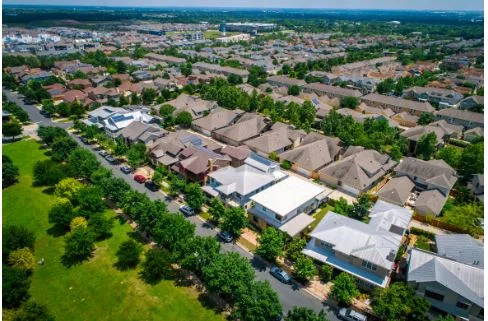Hillside Houses & Harbor Homes: Hot Homing Strategies for Duluth
Duluth, Minnesota, often celebrated as the “San Francisco of the Midwest,” offers a truly distinct flavor of homeownership set against the stunning, vast backdrop of Lake Superior. This port city, with its tiered landscape, vibrant arts scene, and robust local economy rooted in shipping, healthcare, and higher education, creates a constantly moving and intriguing real estate ecosystem. Navigating the world of Duluth real estate requires a unique compass, one that points toward both the historic charm of its architecture and the progressive pulse of its modern developments. Whether you are a first-time homebuyer drawn to the affordability relative to coastal hubs, a seasoned investor seeking rental property growth, or looking to relocate to a city with an unparalleled quality of life, understanding the local dynamics is paramount. The journey to securing a property in this Northern Minnesota jewel is an adventure in itself, and a well-researched approach is the key to unlocking success in the market.
The Current Climate of the North Shore Market
The Duluth housing market presents a fascinating case study in regional strength. Unlike some larger metropolitan areas, Duluth has historically maintained a more stable, yet highly competitive, environment. Recent years have seen a consistent demand, particularly for single-family residences, driven by the city’s appeal to remote workers and those seeking a quieter, nature-rich lifestyle without sacrificing cultural amenities. The scarcity of available housing inventory, a persistent trend, continues to exert upward pressure on prices, leading to homes often selling quickly, sometimes for over the asking price. This low inventory/high demand scenario necessitates preparedness and swift action from prospective buyers.
- Seller’s Advantage: The current market climate favors sellers, largely due to low housing stock.
- Rapid Transactions: Median days on the market have been notably low, indicating quick sales.
- Buyer Strategy: Buyers need pre-approved financing and a clear understanding of their priorities to compete effectively.
- Rental Dynamics: The rental market, particularly for market-rate properties, has shown low vacancy rates, signaling strong demand and potential opportunities for real estate investors.
Navigating Duluth’s Diverse Neighborhood Niches
One of Duluth’s greatest assets is the distinct personality of its neighborhoods. Each area offers a unique living experience, and knowing these local characteristics is essential for making an informed purchasing decision.
East Duluth: Lakeside Charm and Collegiate Connections
This area is generally sought after for its proximity to Lake Superior, its strong public school system, and its stately, well-maintained homes. It encompasses several key sub-districts:
- Lakeside/Lester Park: Known for its family-friendly atmosphere, access to expansive parkland, and homes often boasting Lake Superior views. The vibe is one of established tranquility.
- Congdon Park: Features some of the city’s most prestigious and highest-valued properties, often larger, historic homes nestled among mature trees. It offers quick access to the downtown area and the lakeshore.
- Chester Park/UMD: Popular among academics and students due to its proximity to the University of Minnesota Duluth (UMD). This area balances residential life with a youthful energy, offering varied housing stock from charming bungalows to multi-family rentals.
Central and West Duluth: Historical Foundations and Revitalization
These areas offer a mix of affordability, deep history, and ongoing urban renewal efforts.
- Central Hillside: A historic, densely populated area offering diverse architecture and close proximity to downtown’s employment and cultural hubs. It presents opportunities for renovation and multi-family investment.
- Lincoln Park Craft District: An area experiencing significant revitalization. It has become a magnet for young professionals and creatives, featuring new breweries, small businesses, and loft-style living spaces, appealing to those seeking an urban, walkable neighborhood feel.
- West Duluth/Denfeld: Traditionally more affordable, West Duluth is seeing a rise in popularity among first-time homebuyers. It maintains a strong community identity and offers convenient access to major thoroughfares.
North and Outlying Areas: Nature’s Embrace and New Construction
The neighborhoods further inland, like Woodland and Hermantown (a separate, adjacent city), cater to those desiring larger lots, newer construction, and a feeling of being closer to the forests and trails that define the “Northwoods.”
- These areas attract buyers prioritizing space, modern amenities, and easy access to outdoor recreation, including the extensive Duluth Traverse trail system.
- While offering a suburban feel, they retain quick driving access to the core city’s amenities.
Financial Foundations: Analyzing Investment Potential
For the astute investor, Duluth offers a compelling case for both long-term appreciation and consistent cash flow. The aforementioned tight rental market, especially for quality, well-maintained units, suggests reliable returns.
- Identifying Opportunities: Look for properties near higher education institutions (UMD, St. Scholastica) for student rental potential, or in revitalizing neighborhoods for future value growth.
- Multifamily Units: Duplexes, triplexes, and four-plexes offer a strong investment avenue, but competition for these can be fierce. Thorough financial analysis, including projected maintenance and vacancy rates, is crucial.
Key Investment Metrics to Monitor:
- Median Home Price Trends: Track year-over-year growth to gauge market stability and appreciation rates. Duluth has shown moderate, steady growth, signaling a healthy, non-volatile market.
- Rental Vacancy Rates: Extremely low rates indicate high demand and pricing power for landlords, a positive sign for buy-and-hold investors.
- Local Job Growth: A thriving economy, bolstered by sectors like healthcare (Essentia Health, St. Luke’s) and logistics/shipping, supports property values and tenant demand.
- Permitting and New Construction: Monitor new development, as an increase in housing units could eventually alleviate inventory pressure, though this has been slow to catch up to demand.
- Average Days on Market (DOM): A low DOM confirms buyer urgency, which is a key factor in a competitive environment.
Historic Homes and Modern Preservation
Duluth boasts a rich architectural heritage, particularly in its East End, with many homes dating back to the late 19th and early 20th centuries. Buying a historic home is often a dream for many, but it comes with a specific set of considerations that differ from purchasing new construction.
- Detailed Inspections: Historic homes require specialized inspections to identify potential issues with original plumbing, wiring, and foundations.
- Preservation vs. Renovation: Buyers must weigh the costs and benefits of preserving original features versus modernizing for contemporary living. Local historical societies can be valuable resources for homeowners of architecturally significant properties.
- Incentives: Sometimes, local or state programs offer financial incentives, such as tax credits, for the proper restoration of historic properties. Researching these opportunities can significantly offset renovation costs.
Understanding the Duluth Economic Engine
The resilience of the Duluth real estate market is fundamentally tied to its diverse and stable economy. It serves as the commercial, medical, and educational hub for the Upper Midwest. Key economic drivers include:
- The Port of Duluth-Superior: As the Great Lakes’ largest port, it remains a vital artery for international shipping, particularly for iron ore, coal, and grain. This foundation provides steady, high-paying logistics and industrial jobs.
- Healthcare: Major medical centers and systems employ a significant portion of the city’s population, creating consistent demand for professional housing.
- Tourism: The city’s status as a major regional tourist destination, fueled by Lake Superior and attractions like Canal Park and the Aerial Lift Bridge, supports a thriving hospitality and retail sector, which also feeds into the rental market.
- Higher Education: Institutions like UMD and The College of St. Scholastica anchor a large segment of the population, ranging from faculty and staff to a significant student body.
This multifaceted economic base provides a crucial layer of stability, insulating the local real estate sector from the extreme boom-and-bust cycles seen in markets overly reliant on a single industry.
Conclusion: Charting Your Course in Duluth’s Real Estate Waters
The Duluth real estate market is a compelling, vibrant environment defined by breathtaking natural beauty, a diverse economy, and persistent demand. Successfully navigating a purchase or sale here hinges on preparation, local expertise, and a willingness to act decisively, especially given the low inventory and quick-moving nature of transactions. Whether you seek a classic home in Congdon Park, a contemporary condo overlooking the harbor, or a robust investment property, a tailored strategy is essential. By thoroughly researching neighborhood nuances, understanding the economic undercurrents, and securing your financing, you can confidently chart your course toward your real estate goals. For those looking to fully capitalize on the area’s growth and understand broader Minnesota real estate resources, accessing dedicated professional expertise is a powerful first step in this journey. Given the city’s consistent appeal and economic stability, particularly within the context of the larger regional trends of population movement to mid-sized, quality-of-life-focused cities, the long-term prospects for property owners in Duluth remain exceedingly positive.
Frequently Asked Questions (FAQ)
Q1: Is Duluth a good place for first-time homebuyers?
A1: Yes, absolutely. While the market is competitive and inventory is low, Duluth’s median home prices are generally more affordable compared to larger coastal or major metro areas in the country. First-time buyers benefit from a stable market and strong community resources. Programs and real estate professionals specializing in first-time buyer assistance are widely available to help navigate the process.
Q2: What is the primary factor driving competition in the Duluth housing market?
A2: The primary driver is a persistent low inventory of available homes coupled with steady, increasing demand. This demand is fueled by the city’s high quality of life, robust local economy (healthcare, education, port), and a growing appeal to remote workers seeking a smaller city atmosphere with abundant nature access.
Q3: Are there investment opportunities in Duluth’s rental market?
A3: Yes. The rental market, particularly for both market-rate and affordable units, is characterized by very low vacancy rates. This suggests high demand from renters, making multifamily properties, single-family rentals near universities, and properties in revitalizing areas (like the Lincoln Park Craft District) strong candidates for real estate investment.
Q4: How does Lake Superior influence property values in Duluth?
A4: Lake Superior is a significant value driver. Properties with direct lake access or even desirable lake views command a substantial price premium. The North Shore lifestyle associated with the lake, including recreational access and scenic beauty, is a key component of the city’s appeal, directly correlating to higher property values in those specific, desirable areas.
Q5: What are the main types of housing available in the Duluth area?
A5: Duluth’s housing stock is quite diverse:
- Historic Single-Family Homes: Common in East Duluth, Central Hillside, and Congdon Park, featuring architecture from the early to mid-20th century.
- Bungalows and Starter Homes: Found more frequently in West Duluth and specific areas near the college campuses.
- Townhomes and Condominiums: Concentrated near the waterfront (Canal Park) and in denser, more urban centers.
Newer Construction: Predominantly found in the northern and outlying suburbs, such as Woodland and Hermantown, often offering modern floor plans and amenities.






